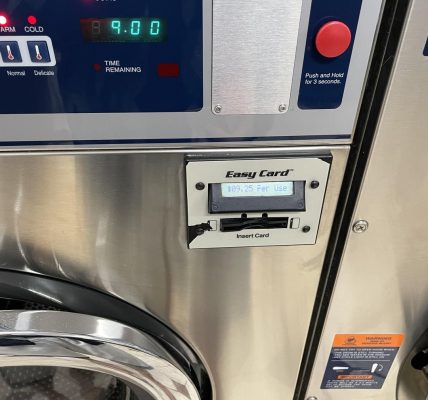Reading a wiring diagram may seem daunting, but it’s the key to understanding your electrical systems. Simply put, learning how to read a wiring diagram will empower you to troubleshoot and fix electrical issues like a pro. These diagrams are intricate maps that reveal the paths of wires and connections within your system. By unraveling this roadmap, you’ll be equipped to navigate the complexities of your electrical setup with confidence. Let’s dive into the essential skills and knowledge needed to decipher these vital diagrams.
How to Read a Wiring Diagram
Understanding the Basics
Welcome to the exciting world of wiring diagrams! Do you ever wonder how all those electronic devices around you work seamlessly? Well, they rely on wiring diagrams to function correctly. In this article, we will guide you through the process of deciphering these intricate drawings.
What is a Wiring Diagram?
A wiring diagram is like a map that shows how electrical circuits are connected and where the power flows. It uses symbols to represent components such as wires, switches, resistors, and more. By understanding these symbols and connections, you can troubleshoot issues and even build your own circuits!
Why Are Wiring Diagrams Important?
Wiring diagrams are crucial for anyone working with electronics or appliances. They provide a detailed visual representation of the system, making it easier to identify problems, install new components, or modify existing setups. Without a clear understanding of wiring diagrams, it can be challenging to work on electrical systems safely and effectively.
Key Components of a Wiring Diagram
Now that you know the importance of wiring diagrams, let’s delve into the key components that make up these diagrams.
Symbols and Codes
One of the first things you’ll notice in a wiring diagram is the variety of symbols used to represent different components. For example, a straight line might represent a wire, while a zigzag line could indicate a resistor. Understanding these symbols is crucial to interpreting the diagram correctly.
Connections and Lines
Wiring diagrams use lines to show how components are connected. These lines can be straight, curved, dashed, or solid, each representing a specific type of connection. By following the lines and connections, you can trace the flow of electricity and identify potential issues.
Labels and Notations
In addition to symbols and lines, wiring diagrams often include labels and notations to provide more detailed information about the components. These labels may indicate the voltage, current, or other specifications of a particular part, helping you ensure everything is connected correctly.
Interpreting a Wiring Diagram Step by Step
Reading a wiring diagram might seem daunting at first, but fear not! We will walk you through the process step by step.
Step 1: Identify the Components
Start by familiarizing yourself with the symbols used in the diagram. Look for components such as switches, lights, motors, and wires, and understand what each symbol represents.
Step 2: Follow the Flow
Trace the lines in the diagram to understand how the components are connected. Pay attention to the direction of the flow of electricity and identify any junctions or branching points.
Step 3: Check for Labels
Look for any labels or notations that provide additional information about the components. This can help you verify the specifications of each part and ensure they are compatible with the rest of the system.
Step 4: Troubleshoot and Test
If you encounter any issues while reading the diagram, use it as a troubleshooting tool. By following the connections and understanding how the system should work, you can identify and fix problems effectively.
Practical Tips for Reading Wiring Diagrams
Reading wiring diagrams is a skill that takes practice, but with these practical tips, you’ll be a pro in no time!
Tip 1: Start Simple
Begin with basic wiring diagrams that involve just a few components. This will help you get comfortable with identifying symbols and understanding connections before tackling more complex diagrams.
Tip 2: Use Color Coding
If the diagram uses color-coding, take advantage of it! Colors can help you quickly differentiate between components and trace the flow of electricity more efficiently.
Tip 3: Practice Patience
Reading wiring diagrams can be a bit like solving a puzzle. Take your time to study each part of the diagram and make sure you understand how all the pieces fit together before moving on.
Tip 4: Seek Help
Don’t be afraid to ask for help if you get stuck. Reach out to experienced individuals or online resources that can provide guidance and clarification on specific parts of the diagram.
Congratulations! You’ve now mastered the art of reading wiring diagrams. With this newfound skill, you’ll be able to tackle electrical projects with confidence and precision. Remember to practice regularly and don’t hesitate to explore more complex diagrams to further enhance your understanding.
How to Read Electrical Diagrams | Wiring Diagrams Explained | Control Panel Wiring Diagram
Frequently Asked Questions
How can I interpret symbols on a wiring diagram?
To interpret symbols on a wiring diagram, start by understanding the basic symbols commonly used in electrical schematics such as lines, dots, circles, squares, and arrows. Refer to the key or legend provided with the diagram to identify specific components like resistors, capacitors, switches, and others. Understanding these symbols will help you follow the flow of electricity and connections in the diagram.
What is the importance of understanding wire color codes in a wiring diagram?
Understanding wire color codes in a wiring diagram is crucial for identifying specific wires and their functions. Different colors represent different purposes, such as power supply, ground, signaling, and more. By knowing these color codes, you can easily trace circuits, troubleshoot problems, and make accurate connections while working with the electrical system.
How do I trace a circuit path on a wiring diagram?
To trace a circuit path on a wiring diagram, begin with the power source and follow the lines or wires connecting various components in the circuit. Pay attention to the symbols representing switches, relays, and other elements that control the flow of electricity. By systematically following the path, you can understand how the circuit is wired and identify any potential issues or points of failure.
Final Thoughts
Understanding how to read a wiring diagram is crucial for anyone dealing with electrical systems. Start by identifying components and understanding their symbols. Follow the flow of the diagram, noting connections and pathways. Practice deciphering diagrams to gain confidence and proficiency in troubleshooting electrical issues effectively. Mastering this skill empowers you to navigate complex wiring systems efficiently.





